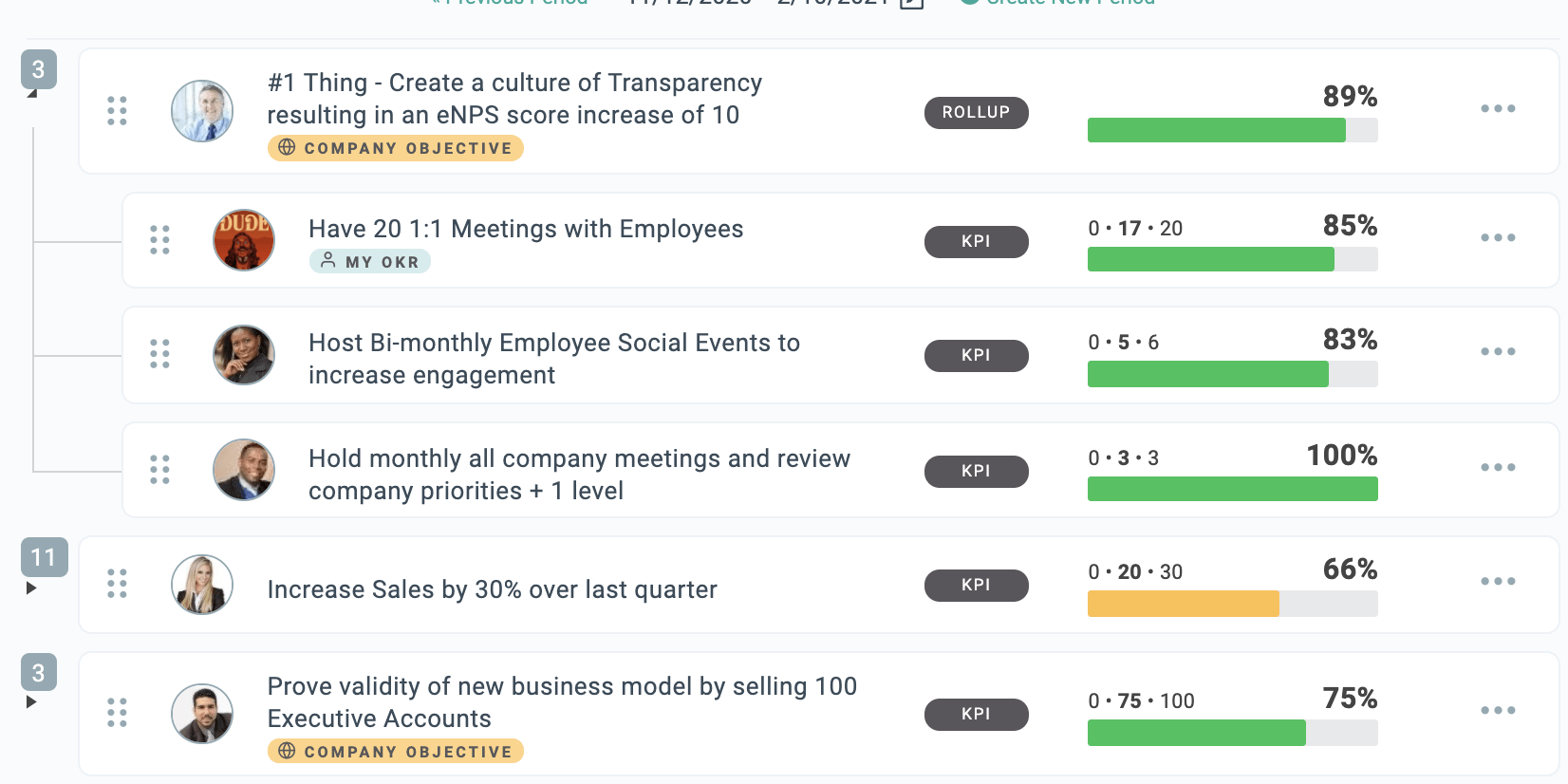A Look at Priority and Critical Numbers Usage by Align Clients
Any proper plan consists of a defined set of actions and a defined set of results. In business planning, success requires adapting behavior to drive business outcomes. You must track not only the work you get done but also the impact of that work on leading indicators of success.
At Align, we help companies define these planning components with two features: Priorities and Critical Numbers. Let’s start by defining the difference between them.
Priorities are actions that will take you from ‘Point A’ to ‘Point B’ and should answer:
- WHY you are focusing on this for the quarter
- HOW you will get from point A to point B
- What SUCCESS you would like to see by the end of the quarter.

Critical Numbers are the measurable result of the actions you are taking in your quarterly priorities. They are the leading indicators of company growth.
What We’ve Observed
An analysis of hundreds of organizations using Align revealed clients who effectively used both of them see more success in completing quarterly priorities than clients who conflated the tools.
We’ve observed that many smaller teams tend to focus only on Priorities, instead of taking the next step to organize some of their metrics into Critical Numbers. On the other hand, many larger teams effectively implement Critical Numbers and keep a broader number of goals and leading metrics within the Critical Numbers feature. Their success in pushing a larger percentage of their priorities into the “green” suggests that they reap more benefit from the software.
So, how can you find the same benefit as these larger teams? Try the following steps to better organize your Critical Numbers and your priorities.
Tips on Using Critical Numbers
1. Select 1-5 Critical Numbers per Quarter
Your Critical Numbers should be the most important metrics of success your organization can achieve in a given quarter.
2. Make sure all of your Critical Numbers are in line with your focus for the quarter and will reflect your progress toward that goal
Historically, the critical number was designed as a habit, which encourages businesses to pick the single most important number to move their company forward. This ensures focus and purpose. The critical number will often be a metric addressing a bottleneck or opportunity.
*tip* Alternatively, if focusing on one Critical Number may result in a negative reaction in another area of your business, it may make sense to set up ‘mirror’ Critical Numbers: if you are focusing on speeding up a process, for example, consider having a Critical Number to monitor quality, which may be affected.
3. Your Critical Numbers should be visible to your entire team/company
Your entire company should understand why your quarterly priorities were chosen and have access to visualization of progress.
4. Implement Priorities that are goals that help you keep your Critical Numbers in the green
5. Using the ‘Teams’ functions allows for divisions, departments and even individuals to have their own Critical Numbers
Make your focus for a given quarter clear to the team by dividing your numbers by subsections of your organization

Critical Numbers and Priorities Example:
Your company’s quarterly target: $X in New Business Revenue
Your company Critical Numbers:
- X Sales Leads
- X Demos/Sales Calls Scheduled
- X Average Age of Opportunities
- X Opportunity Win Rate
Your Company Priorities:
- Publish six blog posts per quarter to increase exposure and leads
- Put at least 50 new leads per week into a call sequence to increase the number of demos/sales calls scheduled
- Decrease sales cycle from 4 to 3 week through creation of a new sales process.
- Have each salesperson complete at least one sales webinar course per quarter in order to increase opportunity win rate to 30%
Wrap Up
The companies that effectively use the Critical Numbers feature see more success in completing Priorities. Follow our tips for effectively implementing Critical Numbers in your organization and maximize the benefits from the Align tool-set.





